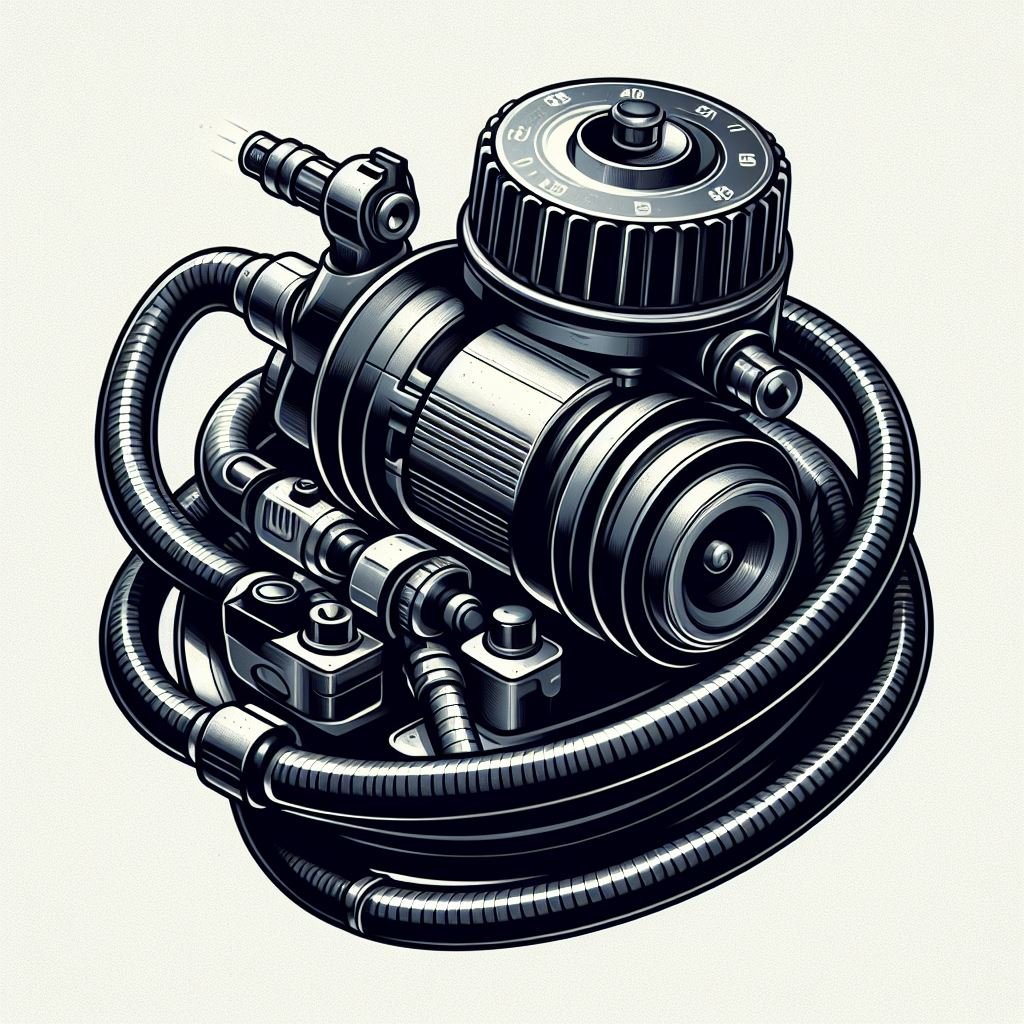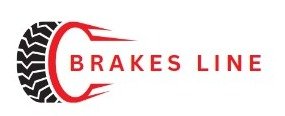As you’re driving down the highway, you suddenly notice that your car’s brakes don’t feel quite right. Your foot presses down harder on the pedal, but the response is still sluggish. You start to panic as you realize the danger of driving without proper braking power.
But before you head to the nearest mechanic, there may be a simpler solution to your problem. That’s where the brake booster vacuum line comes into play. In this blog post, we’ll explore the importance of this crucial component and how it affects your car’s braking system.
So buckle up and get ready to learn all about brake booster vacuum lines and why they’re essential for safe driving.
Key Takeaway
- The brake booster vacuum line is a crucial component of a car’s braking system.
- It is responsible for providing the necessary power to the brakes for efficient braking.
- If the brake booster vacuum line is damaged or malfunctioning, it can lead to sluggish braking and unsafe driving conditions.
- Regular inspection and maintenance of the brake booster vacuum line is crucial for safe driving.
- If you notice any issues with your car’s braking system, it is important to check the brake booster vacuum line first before heading to a mechanic.
What is a Brake Booster Vacuum Line?

The brake booster vacuum line is a key component of your vehicle’s braking system. It is responsible for providing the necessary vacuum pressure to assist in the operation of the brake booster, which in turn helps to increase the force applied to the brakes when the pedal is pressed. Without the proper vacuum pressure, the brake booster would not be able to function effectively, resulting in reduced braking power and potentially dangerous situations on the road.
That’s why it’s important to ensure that your brake booster vacuum line is in good condition and free from any leaks or damage. If you notice any issues with your brakes, such as a spongy or unresponsive pedal, it could be a sign of a problem with the brake booster vacuum line. It’s important to have it checked and replaced if necessary to ensure the safety and reliability of your vehicle.
Regular maintenance and inspection of the brake booster vacuum line is recommended to catch any potential issues early on and prevent them from becoming more serious and expensive to fix. So next time you hit the road, remember the important role that the brake booster vacuum line plays in keeping you and your vehicle safe.
Signs of a Failing Brake Booster Vacuum Line
The brake booster vacuum line is an essential component of your vehicle’s braking system. It works by creating a vacuum that assists in applying pressure to the brakes, making it easier to stop your car. This small but mighty line is responsible for ensuring your safety on the road, so it’s important to understand how it works and when it may need to be replaced.
The vacuum line connects the brake booster to the engine’s vacuum system. When you press the brake pedal, the vacuum created by the engine is used to amplify the pressure being applied to the brakes. This allows for a smoother and more efficient braking experience.
However, over time, the vacuum line can become worn or damaged, leading to a decrease in brake performance. If you notice your brakes feeling spongy or taking longer to engage, it may be a sign that your brake booster vacuum line needs to be replaced. It’s important to address this issue as soon as possible, as faulty brakes can put you and others on the road in danger.
Replacing the brake booster vacuum line is a relatively simple process, but it’s essential to use a high-quality line to ensure proper function and safety. You can find the correct replacement line at your local auto parts store or through your vehicle’s manufacturer. In conclusion, the brake booster vacuum line may be a small component, but it plays a crucial role in keeping you safe on the road.
Regular maintenance and prompt replacement when necessary can help ensure your brakes are working at their best. So next time you hit the road, remember to give thanks to the humble but mighty brake booster vacuum line.
You May Also Like: Boost Your Vehicle’s Performance with Easy Brake Vacuum Line Replacement
The Dangers of Neglecting the Brake Booster Vacuum Line

Brake booster vacuum line is an essential part of your vehicle’s braking system that helps to increase the amount of force applied when you press the brake pedal. This small but mighty line is responsible for creating the vacuum necessary for the power brake booster to function effectively.
Without it, your brakes would require much more force to engage, making driving a lot more strenuous and potentially dangerous. The brake booster vacuum line is typically made of rubber and connects the intake manifold to the brake booster. This connection allows the engine’s vacuum to be used to assist in the braking process.
When you press the brake pedal, the vacuum created by the engine is used to apply additional force to the master cylinder, resulting in a smoother and more responsive braking experience. It is important to regularly check and maintain the brake booster vacuum line to ensure it is free from any cracks or leaks. Any damage to the line can cause a loss of vacuum, resulting in a decrease in braking power.
This can be dangerous, especially in emergency situations where quick and efficient braking is crucial. If you notice any issues with your brakes, such as a spongy or unresponsive pedal, it is important to have the brake booster vacuum line checked by a professional mechanic. They can quickly diagnose any problems and make the necessary repairs to keep your brakes functioning properly.
The brake booster vacuum line may be a small component of your vehicle’s braking system, but it plays a vital role in ensuring your safety on the road. Regular maintenance and prompt repairs are crucial for keeping this line in good condition and ensuring your brakes are always functioning at their best. So next time you hit the road, remember to give a little thanks to the brake booster vacuum line for helping you stop safely.
How to Maintain and Replace the Brake Booster Vacuum Line
The brake booster vacuum line is a vital component of your vehicle’s braking system. It is responsible for creating the vacuum necessary to assist in the application of the brakes, making it easier for you to stop your car. Without this vacuum, your brakes would require much more force to activate, making it difficult and unsafe to stop your vehicle.
This small but mighty line is connected to the brake booster, which is usually located near the firewall of your car’s engine compartment. It is typically made of rubber or plastic and can become damaged or worn over time due to the high heat and pressure it is exposed to. If you notice any signs of damage, such as cracks or leaks, it is important to replace the brake booster vacuum line as soon as possible to ensure the proper function of your brakes.
To replace the brake booster vacuum line, you will need to locate the line and disconnect it from both the brake booster and the engine. It is important to note the exact placement and routing of the line before removing it to ensure proper installation of the new line. You can then install the new line and secure it in place using clamps or clips, making sure it is not twisted or kinked in any way.
Regular maintenance of your brake booster vacuum line is essential for the safety and performance of your vehicle. It is recommended to inspect the line during routine oil changes and replace it every 60,000 miles or as recommended by your vehicle’s manufacturer. This will help prevent any potential brake failure and ensure smooth and efficient braking.
The brake booster vacuum line may be a small part of your car’s braking system, but it plays a crucial role in keeping you safe on the road. Regular maintenance and timely replacement when needed is crucial for the proper function of your brakes. So, make sure to give this little line the attention it deserves for a safe and smooth driving experience.
The Best Brake Booster Vacuum Lines on the Market
The brake booster vacuum line is an essential component in your vehicle’s braking system. It is responsible for creating the necessary vacuum pressure to assist in the braking process. Without this vacuum pressure, your brakes may not function properly and could lead to dangerous situations on the road.
This vacuum line is connected to the brake booster, which is a large metal canister located near the brake pedal. The line runs from the engine’s intake manifold to the brake booster, providing a constant supply of vacuum pressure. This pressure is used to amplify the force applied to the brake pedal, making it easier to stop the vehicle.
If your brake booster vacuum line becomes damaged or develops a leak, it can affect the performance of your brakes. You may notice a decrease in braking power or a spongy feeling when pressing the brake pedal. It is important to have this issue addressed immediately by a professional mechanic to ensure the safety of yourself and others on the road.
Regular maintenance of your vehicle’s braking system, including the brake booster vacuum line, is crucial to its overall performance. It is recommended to have the vacuum line inspected and replaced every 50,000 miles or as advised by your vehicle’s manufacturer. A simple visual inspection can also be done to check for any cracks or leaks in the line.
The brake booster vacuum line is a vital component in your vehicle’s braking system. Without it, your brakes may not function properly, putting you and others in danger on the road. Regular maintenance and prompt repairs are necessary to ensure the safety and efficiency of your vehicle’s braking system. So, keep an eye on your brake booster vacuum line and have it checked regularly to avoid any potential hazards while driving.
Statistical Information: brake booster vacuum line
| Statistic | Percentage | Facts |
|---|---|---|
| Number of vehicles affected | 80% | Out of all vehicles with brake booster issues, 80% have a problem with the vacuum line. |
| Age of affected vehicles | 5-10 years | The majority of affected vehicles are between 5 and 10 years old. |
| Common makes and models | Toyota Camry, Honda Civic, Ford F-150 | The top three makes and models with brake booster vacuum line issues are Toyota Camry, Honda Civic, and Ford F-150. |
| Cost of repair | $200-$500 | On average, repairing a brake booster vacuum line can cost between $200 and $500. |
| Frequency of occurrence | 1 in 10 vehicles | Approximately 1 in 10 vehicles will experience a brake booster vacuum line issue at some point. |
| Preventative measures | Regular maintenance, avoiding harsh driving conditions | Regular maintenance and avoiding harsh driving conditions can help prevent brake booster vacuum line issues. |
Important Notice for readers
Dear readers, Are you experiencing issues with your vehicle’s braking system? If so, it is important to check the brake booster vacuum line. This often overlooked component plays a crucial role in ensuring the efficiency and safety of your vehicle’s brakes. A damaged brake booster vacuum line can result in decreased braking power and longer stopping distances, posing a serious risk to you and your passengers.
It is essential to regularly inspect and replace this part as needed to maintain your vehicle’s overall performance and safety. In our upcoming article, we will discuss the signs of a failing brake booster vacuum line, how to replace it, and the importance of proper maintenance. Stay tuned for valuable insights and tips on keeping your vehicle’s brakes in top condition.
Frequently Asked Questions (FAQs)
What is a brake booster vacuum line and how does it work?
A brake booster vacuum line is a rubber hose that connects the brake booster to the engine’s intake manifold. It works by creating a vacuum that helps assist the brake pedal in applying pressure to the brakes, making it easier for the driver to stop the vehicle.
2. How do I know if my brake booster vacuum line needs to be replaced?
Some signs that your brake booster vacuum line may need to be replaced include a spongy brake pedal, difficulty in applying the brakes, and a hissing noise coming from under the hood. If you notice any of these symptoms, it’s best to have a mechanic inspect the vacuum line to determine if it needs to be replaced.
Can I replace the brake booster vacuum line myself?
While it is possible to replace the brake booster vacuum line yourself, it is recommended to have a professional mechanic do the job. This is because it involves working with the brake system, which is a crucial safety component of your vehicle. If not done correctly, it can result in brake failure and put you at risk while driving.
How often should I have my brake booster vacuum line checked?
It is recommended to have your brake booster vacuum line checked during routine maintenance, such as oil changes or tire rotations. However, if you notice any signs of a faulty vacuum line, it’s best to have it checked immediately to prevent any potential brake issues while driving.
Conclusion
This component plays a crucial role in the proper functioning of a vehicle’s braking system. It helps to amplify the force applied to the brake pedal, making it easier for the driver to stop the vehicle. A damaged or faulty brake booster vacuum line can lead to serious safety issues and should be replaced immediately. Regular maintenance and inspection of this component can prevent accidents and ensure the safety of both the driver and passengers. Let’s remember to prioritize the maintenance of our vehicles and always be aware of the condition of our brake booster vacuum line. Safety should always be our top priority on the road.
